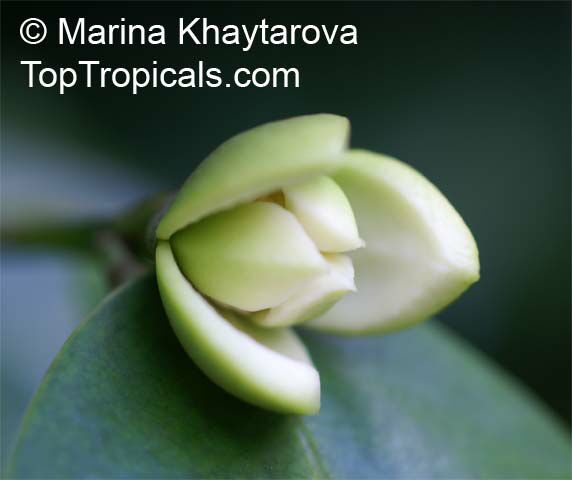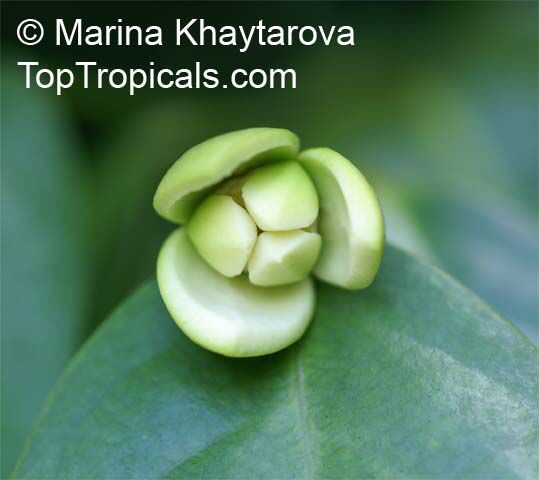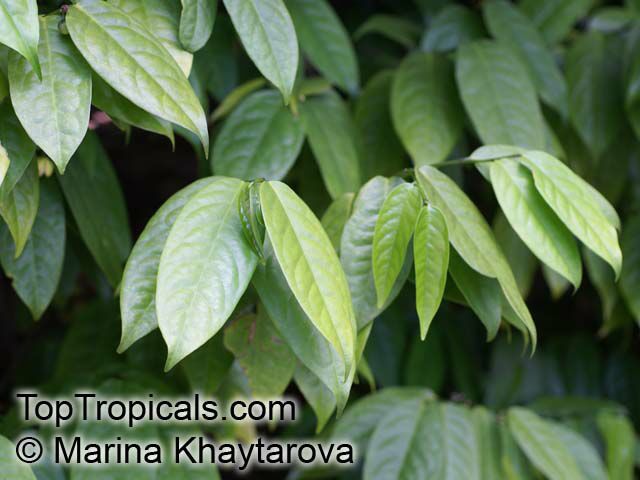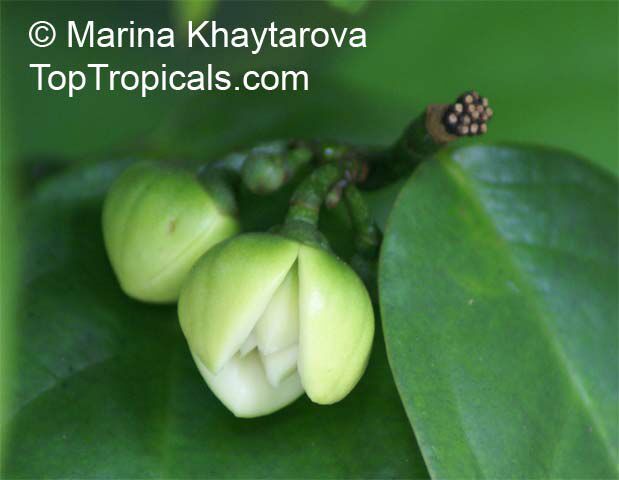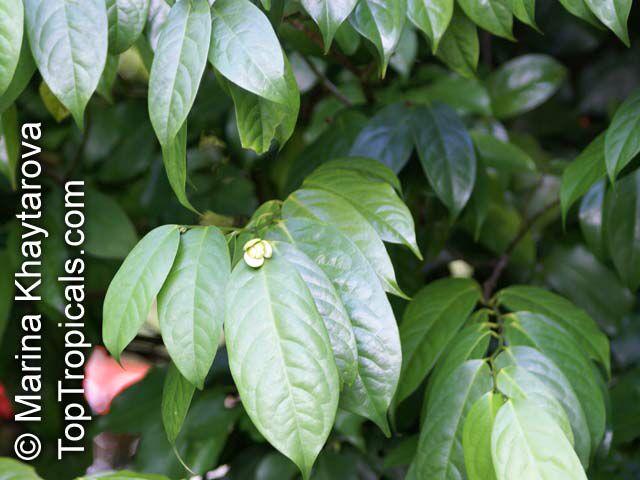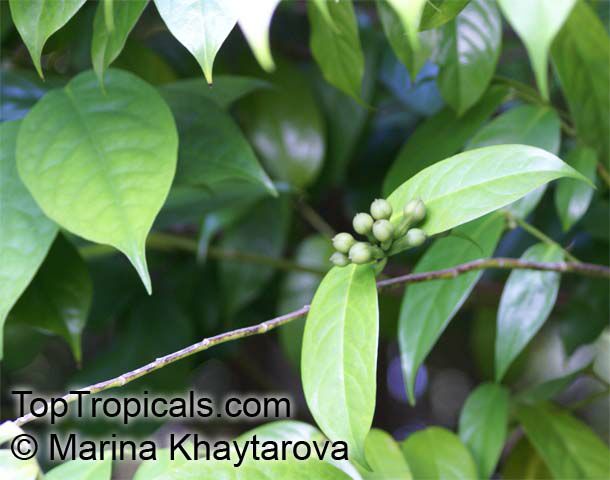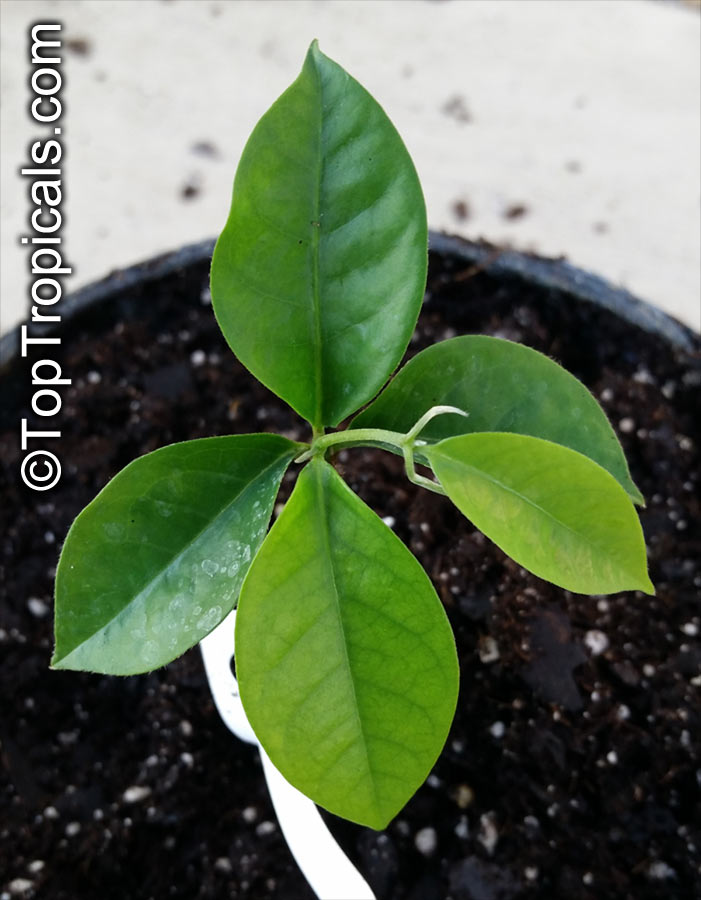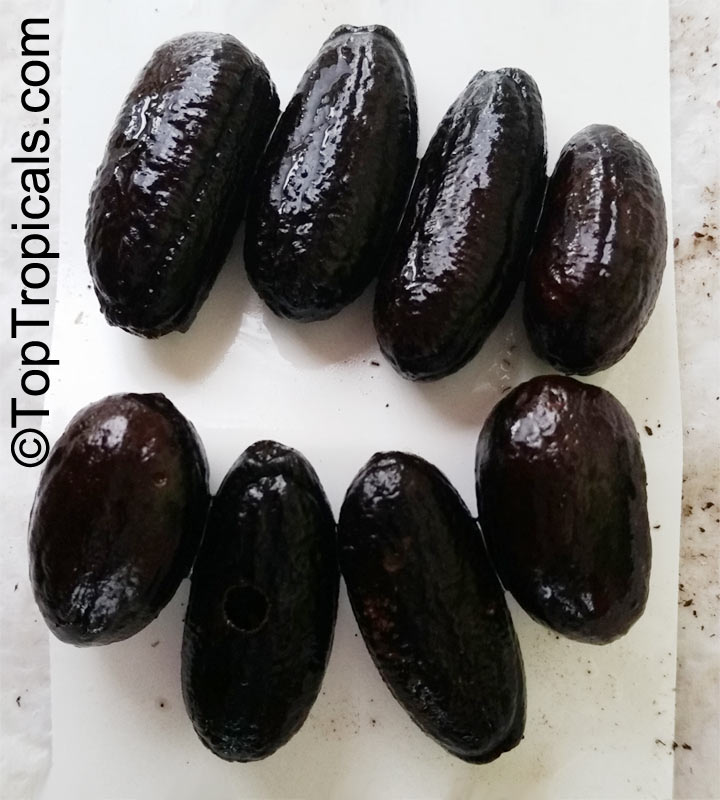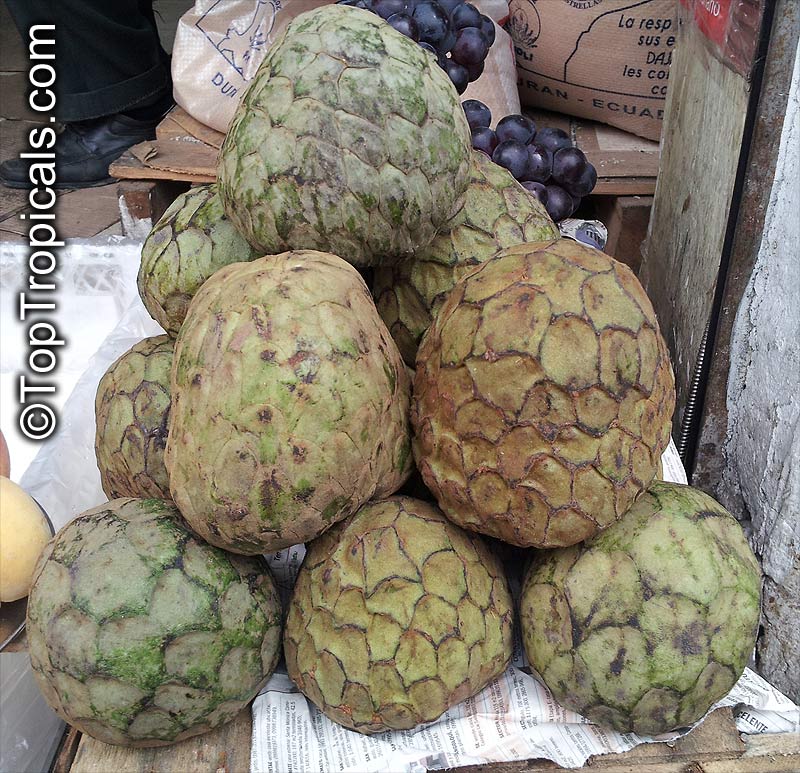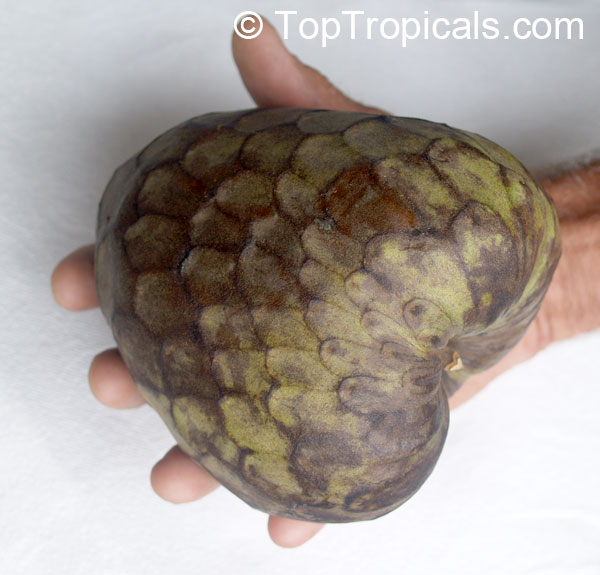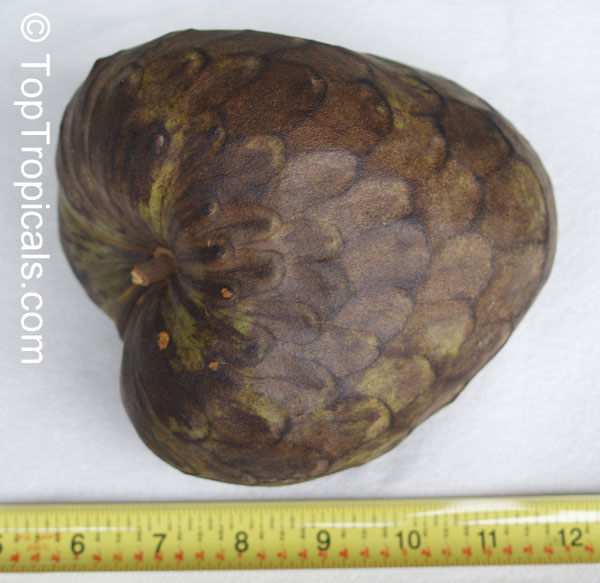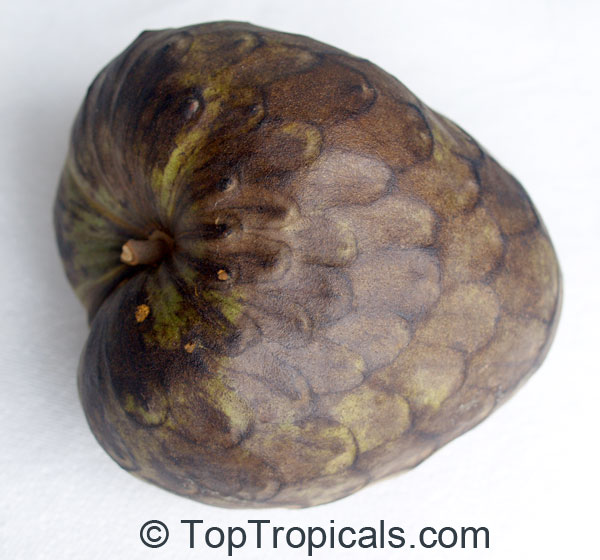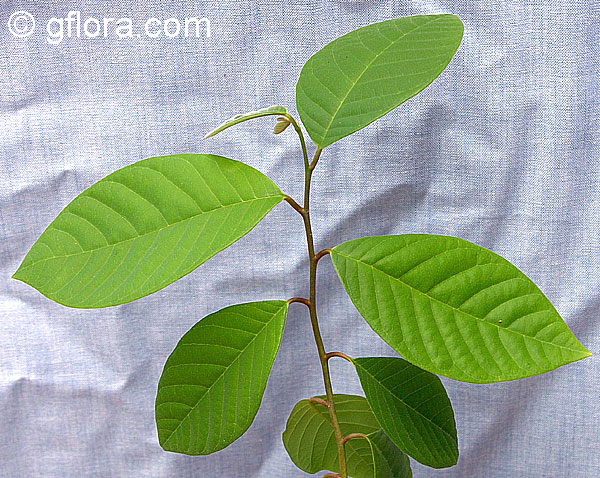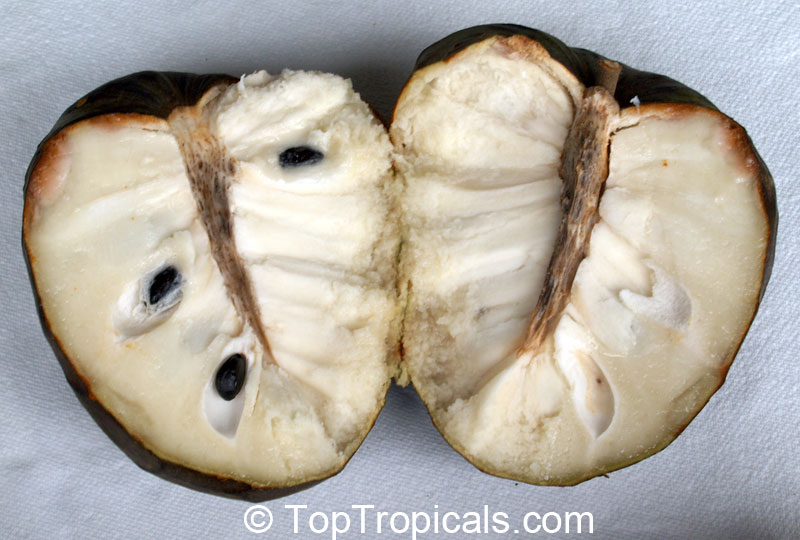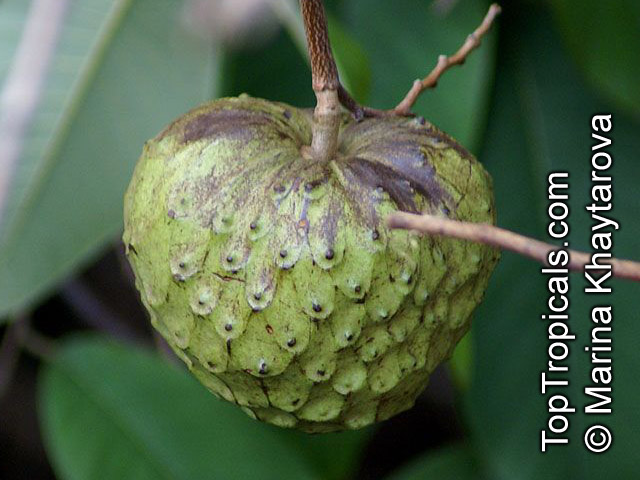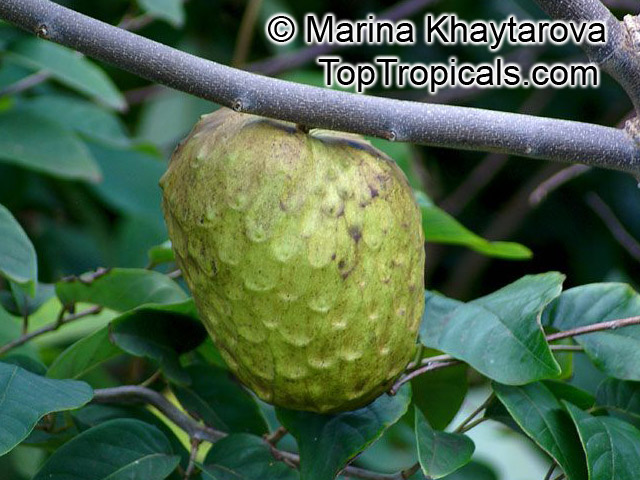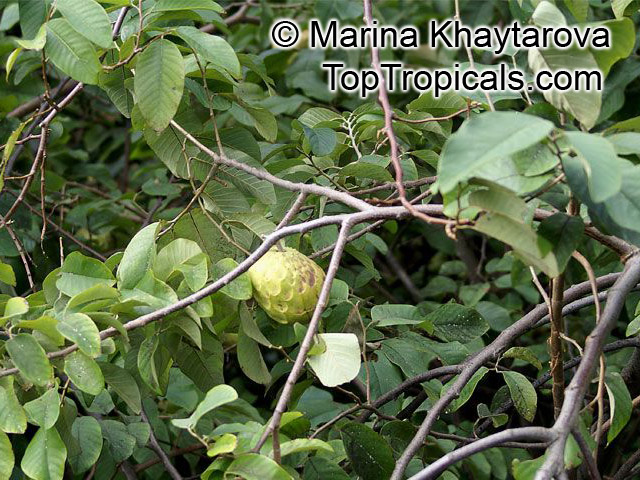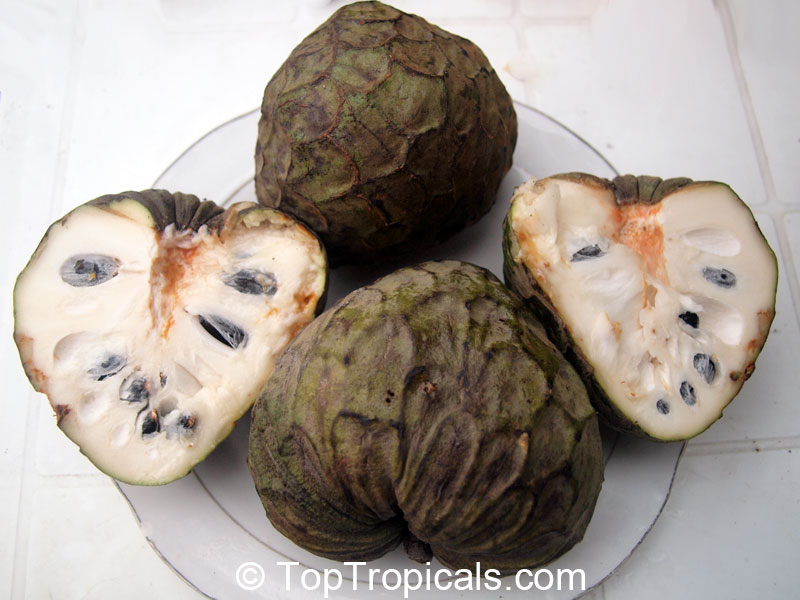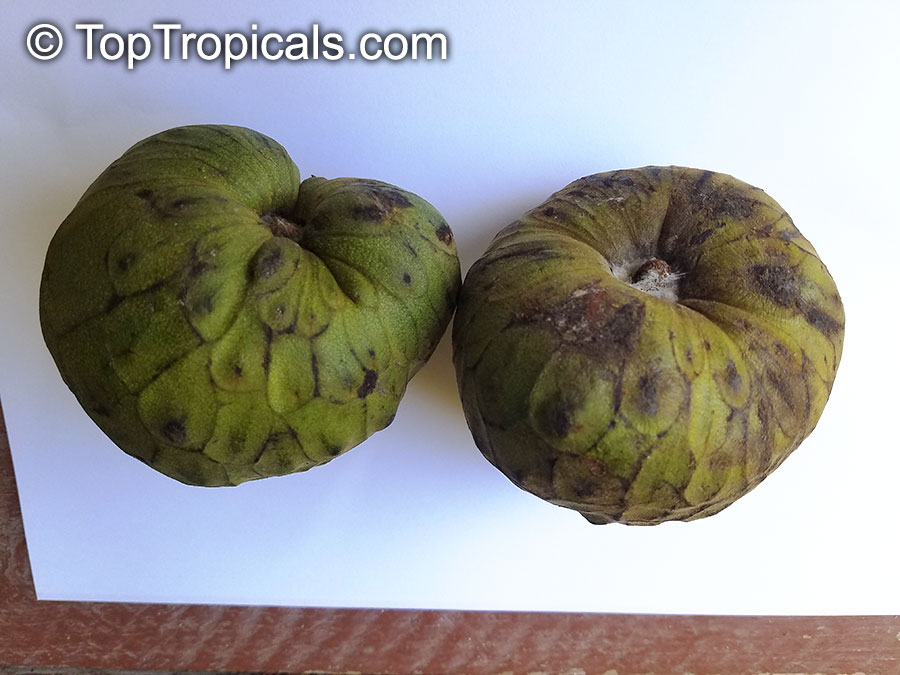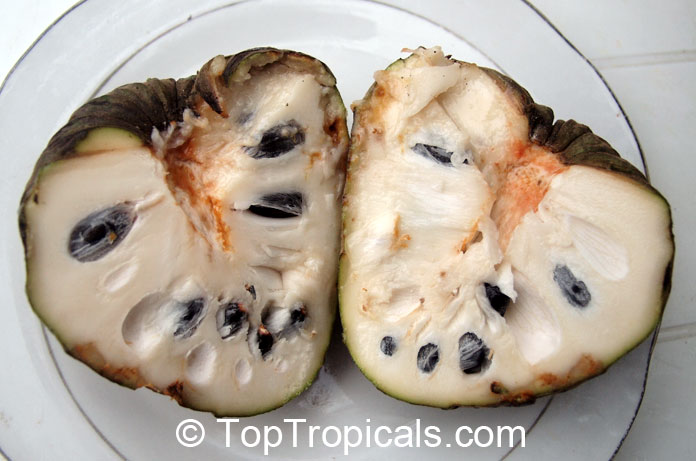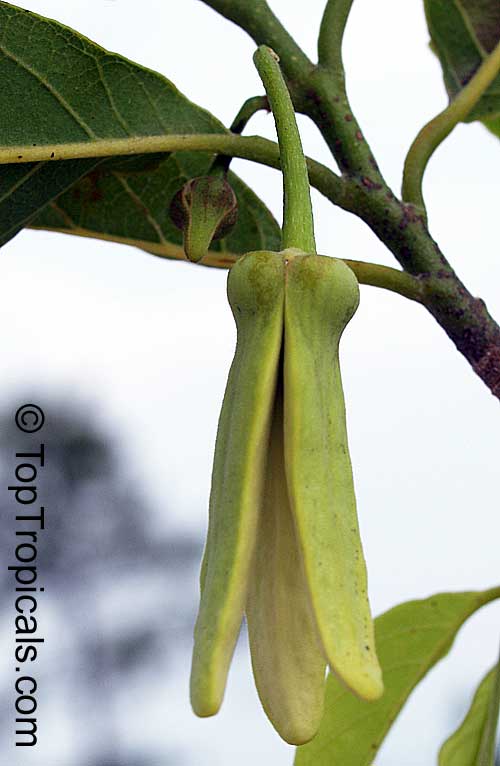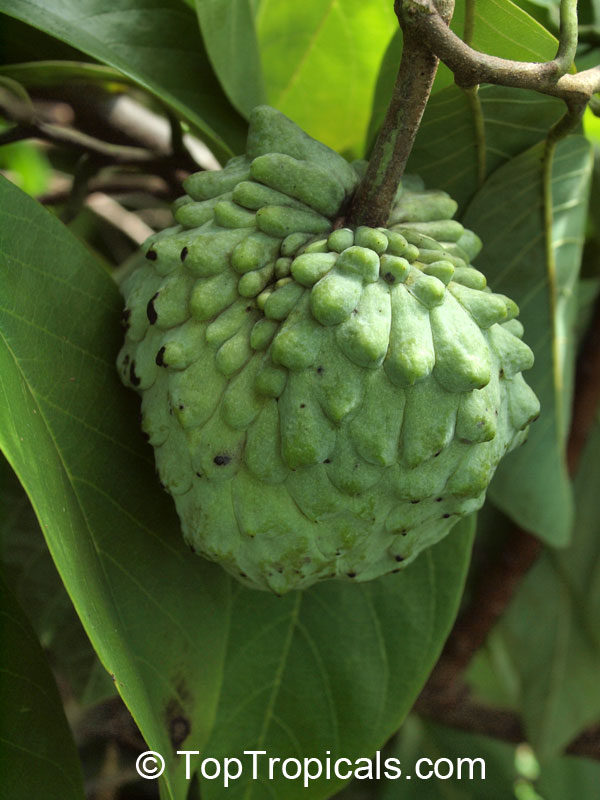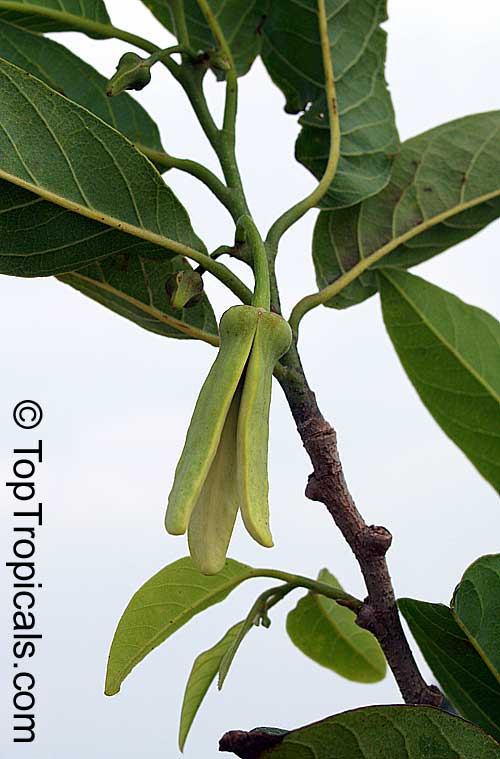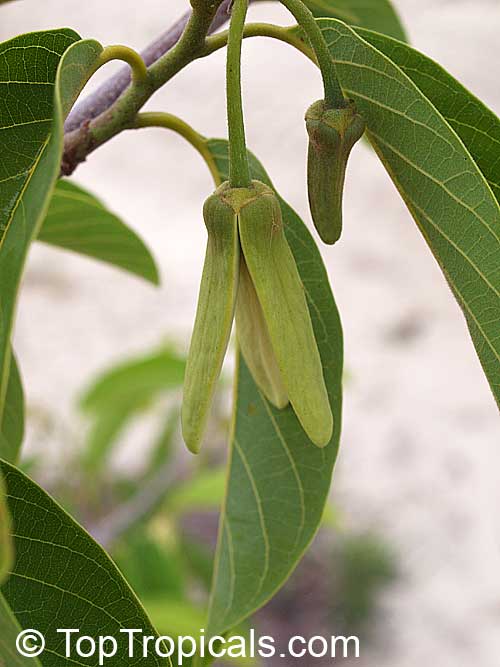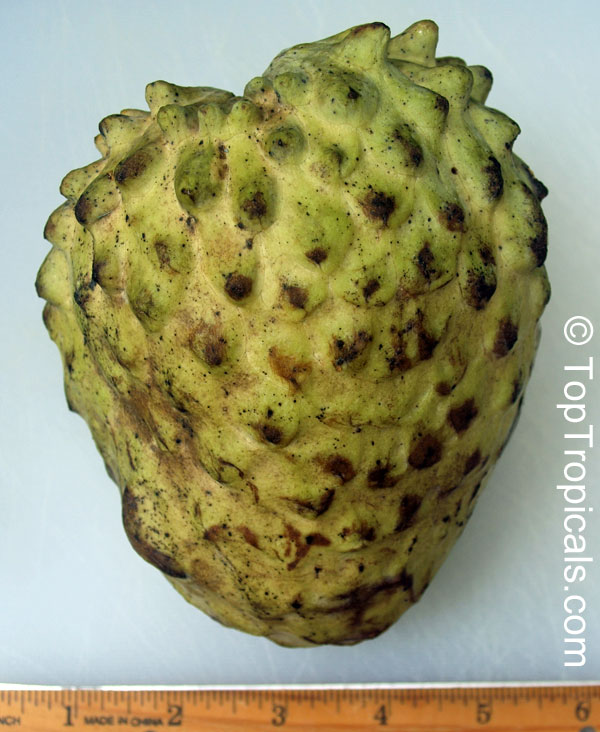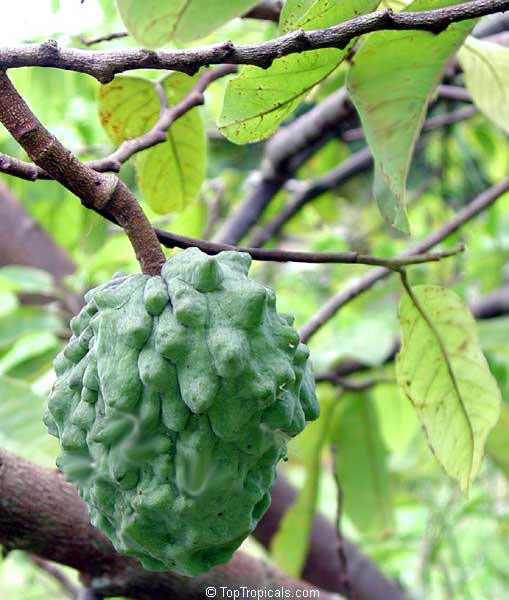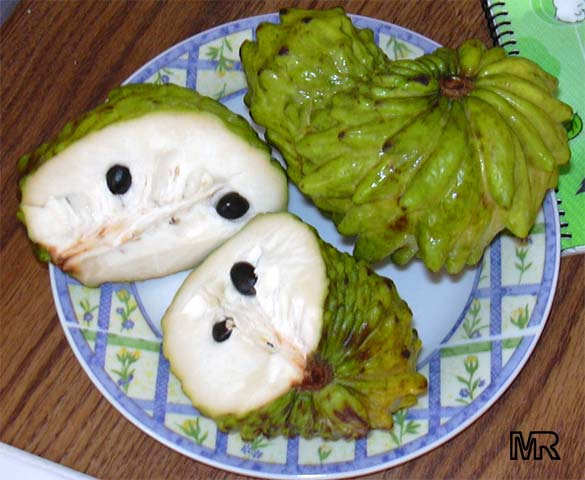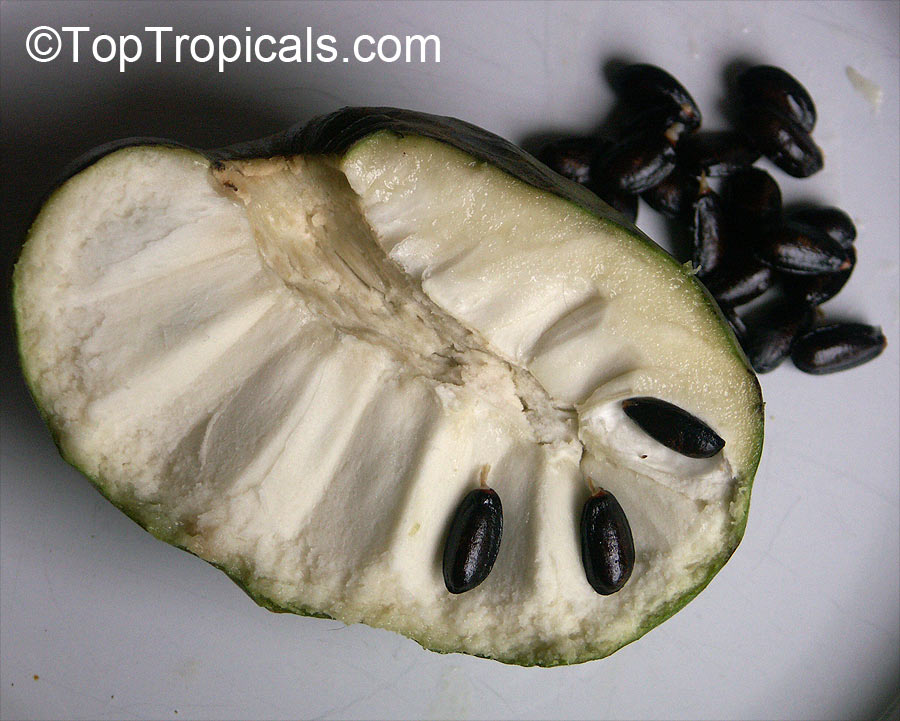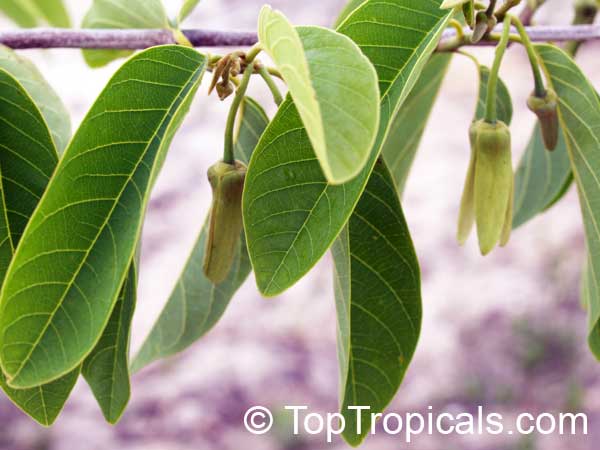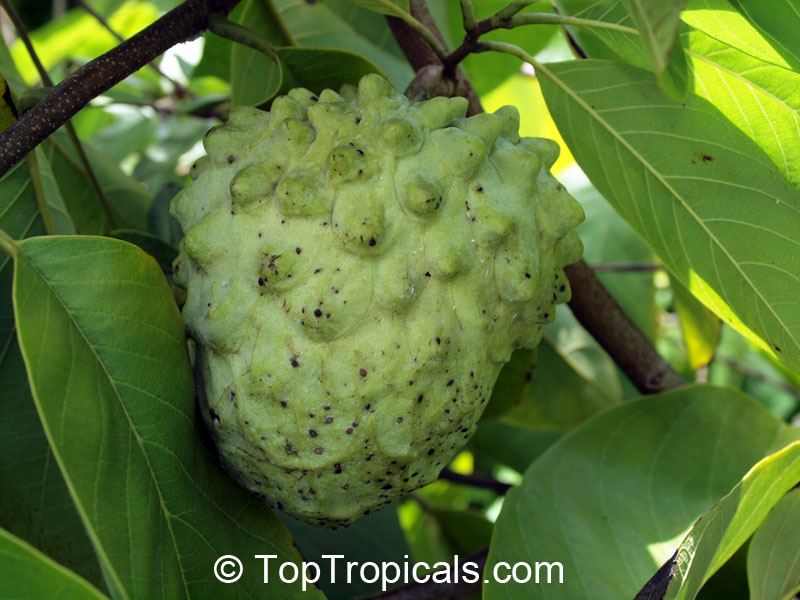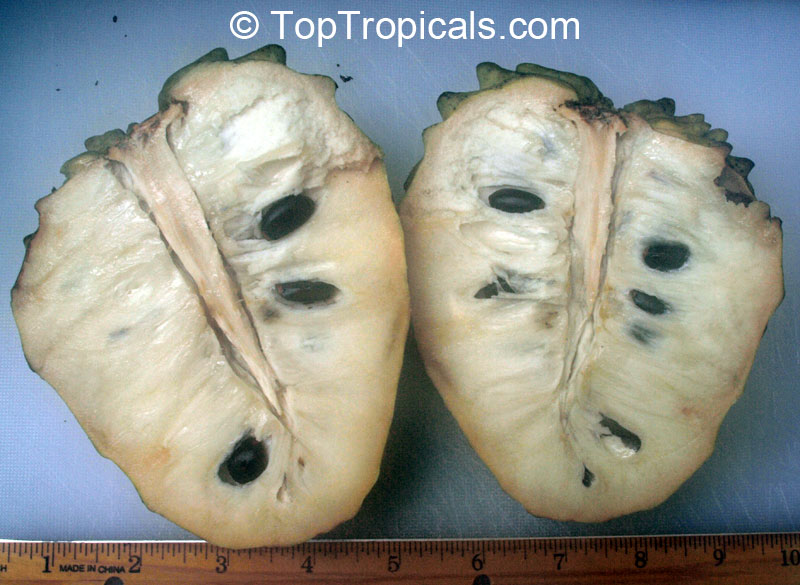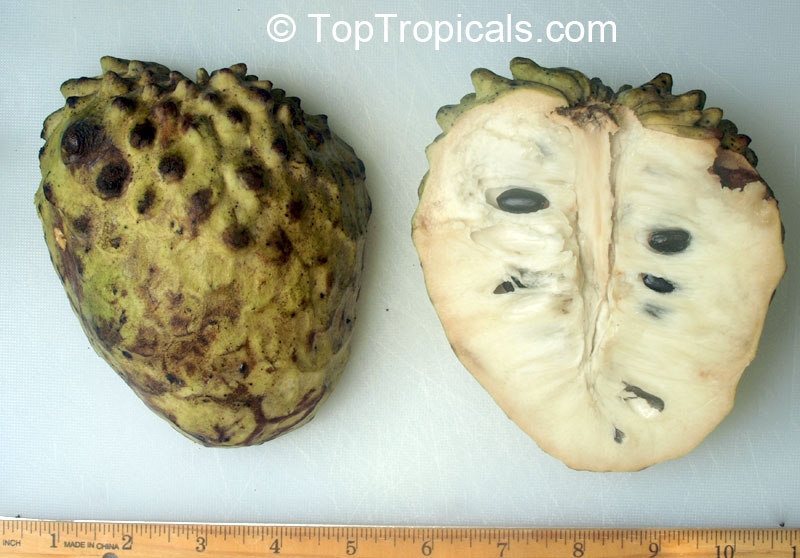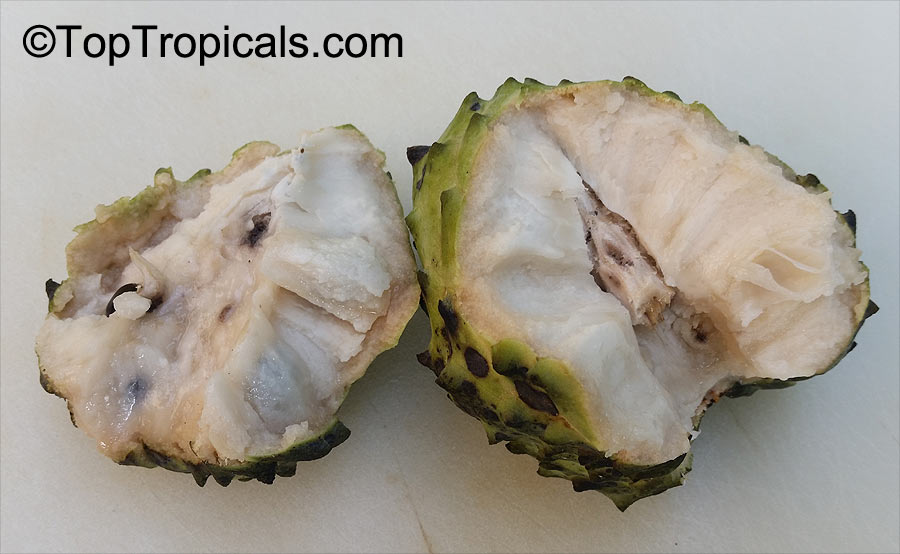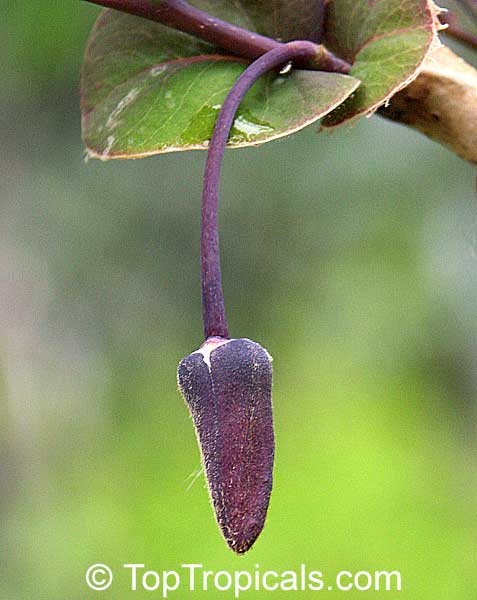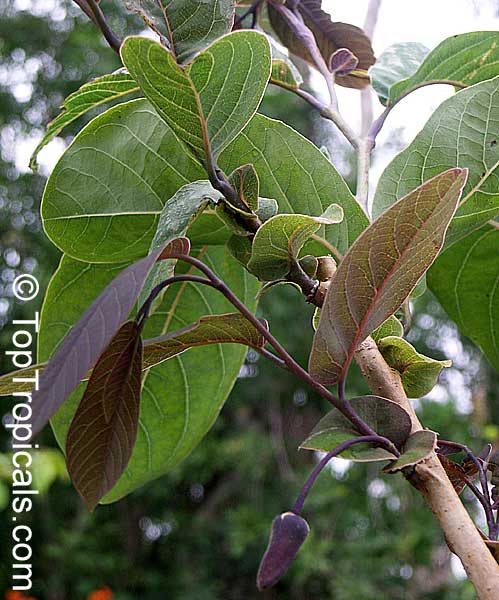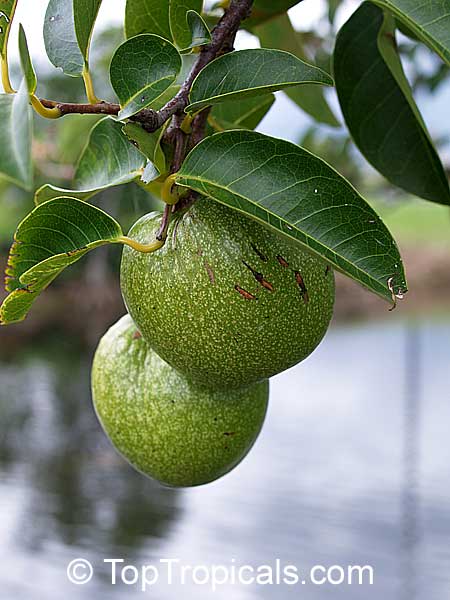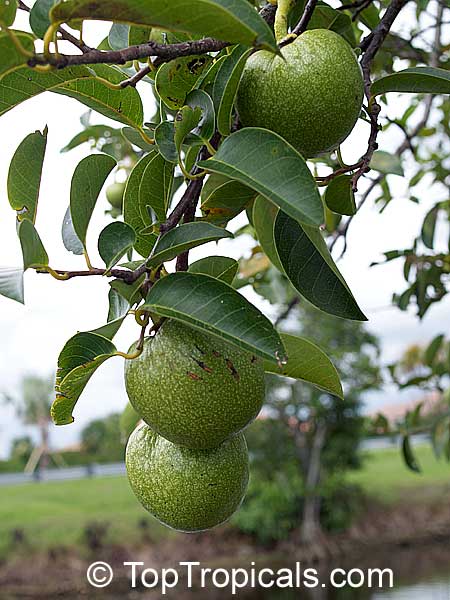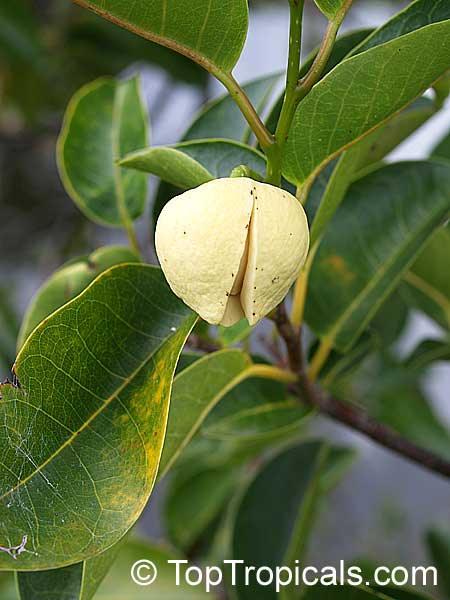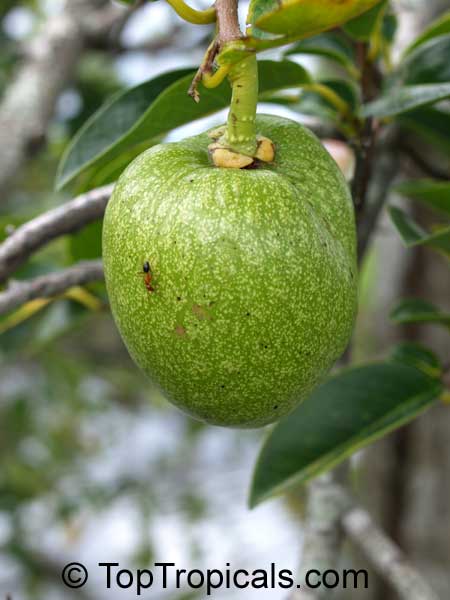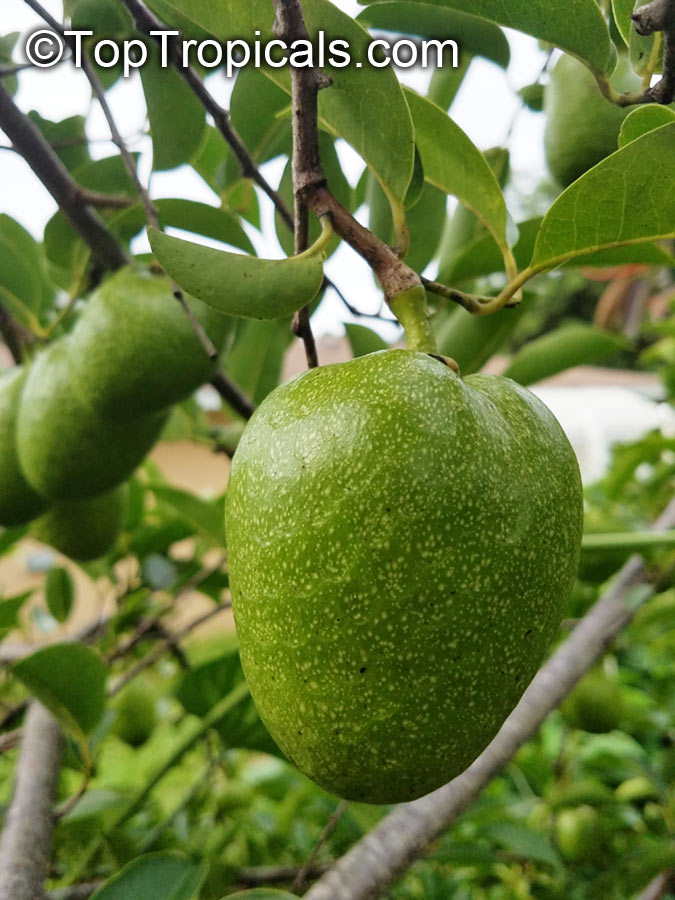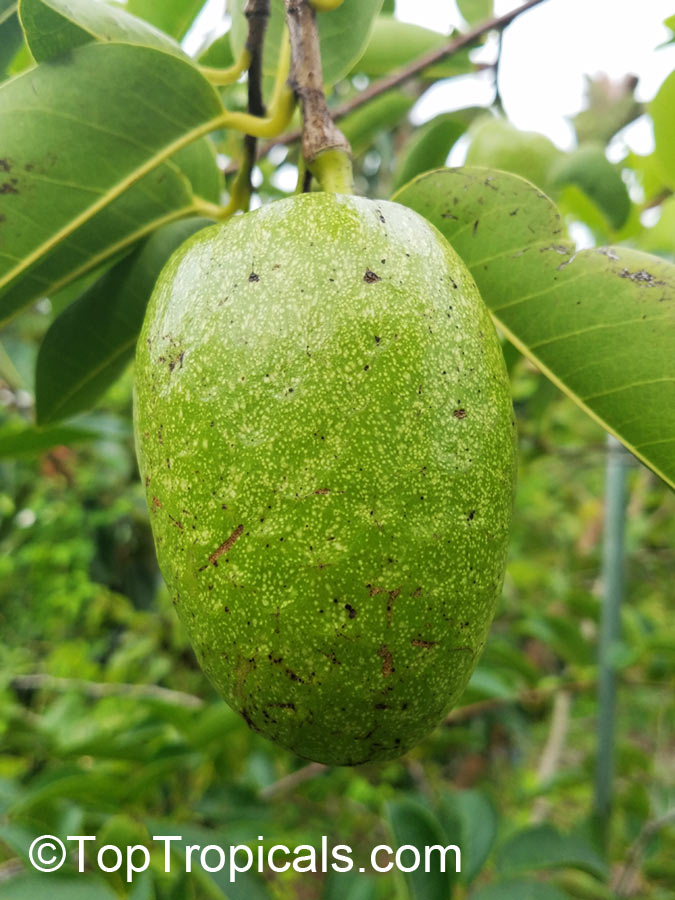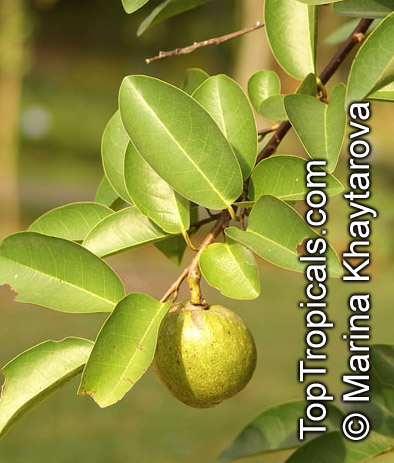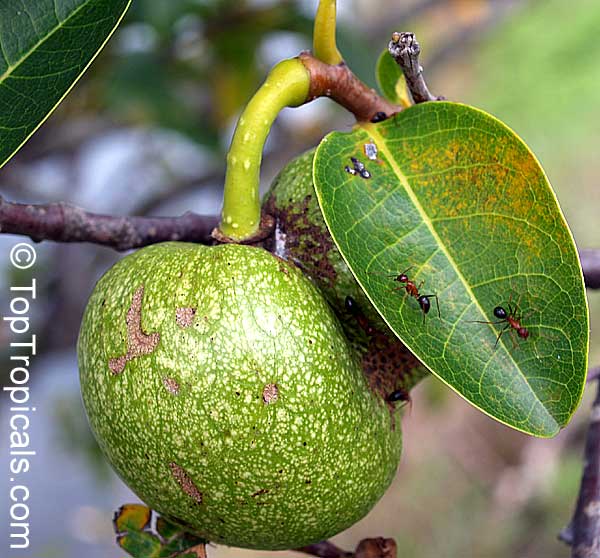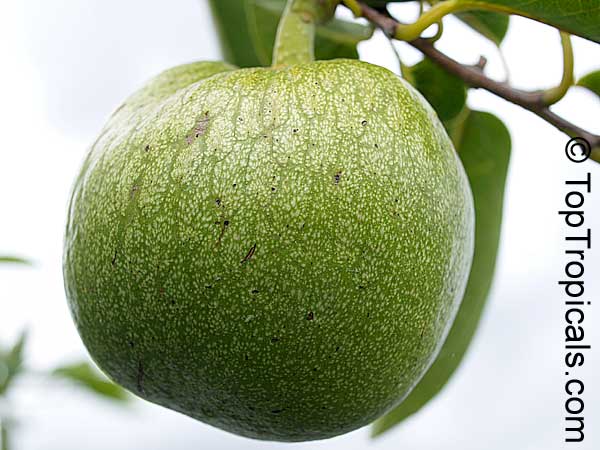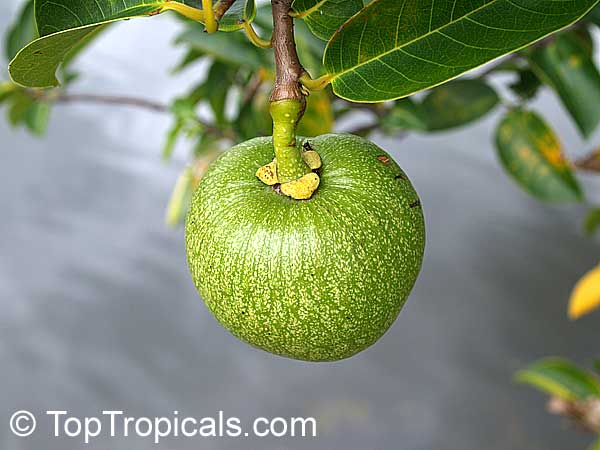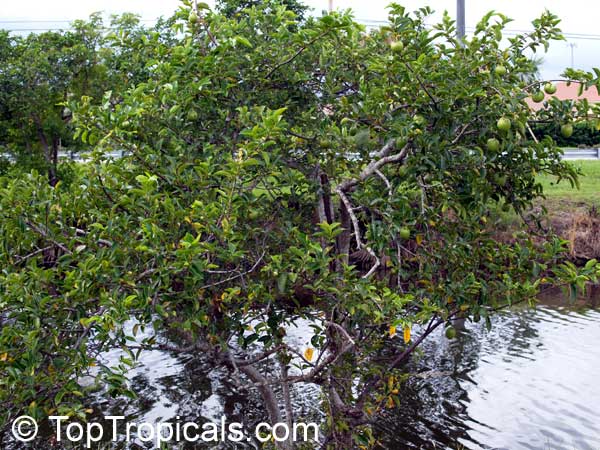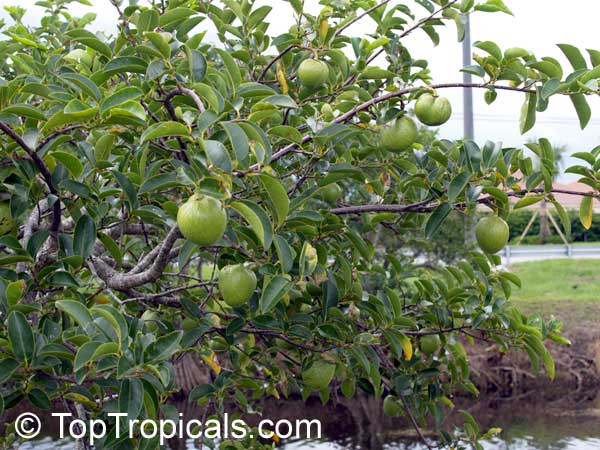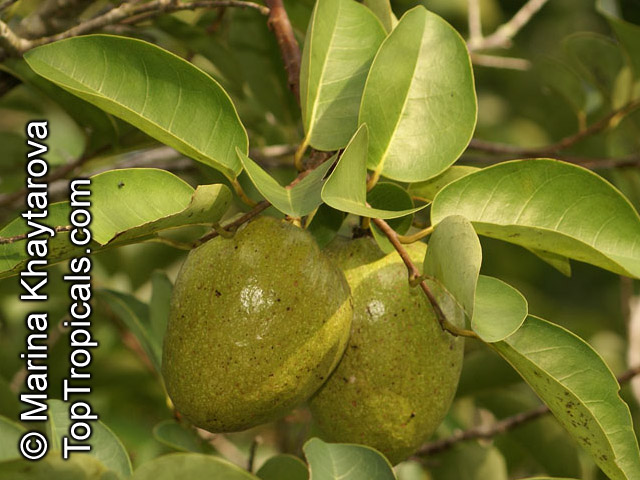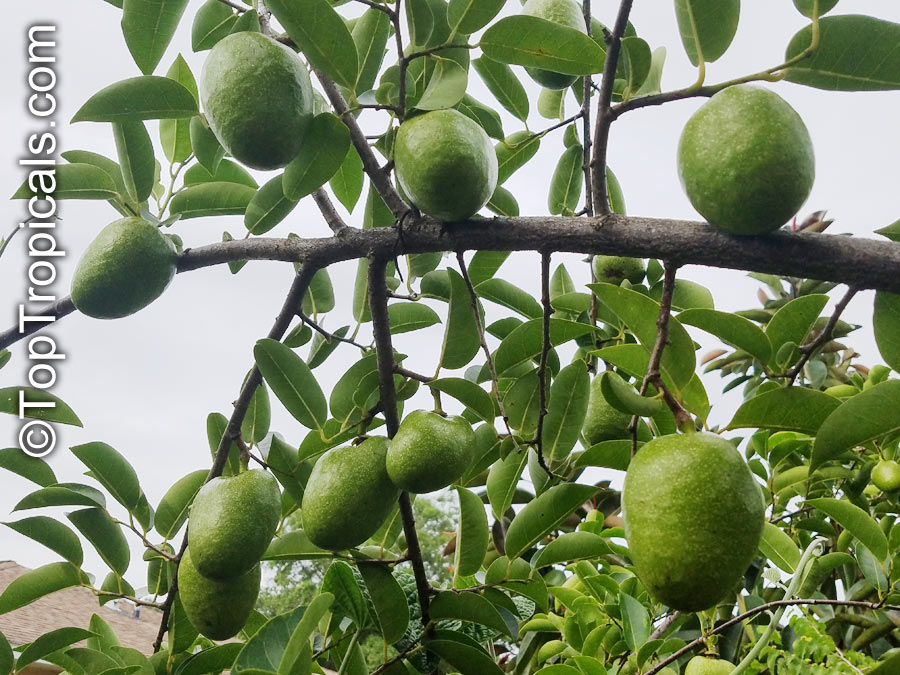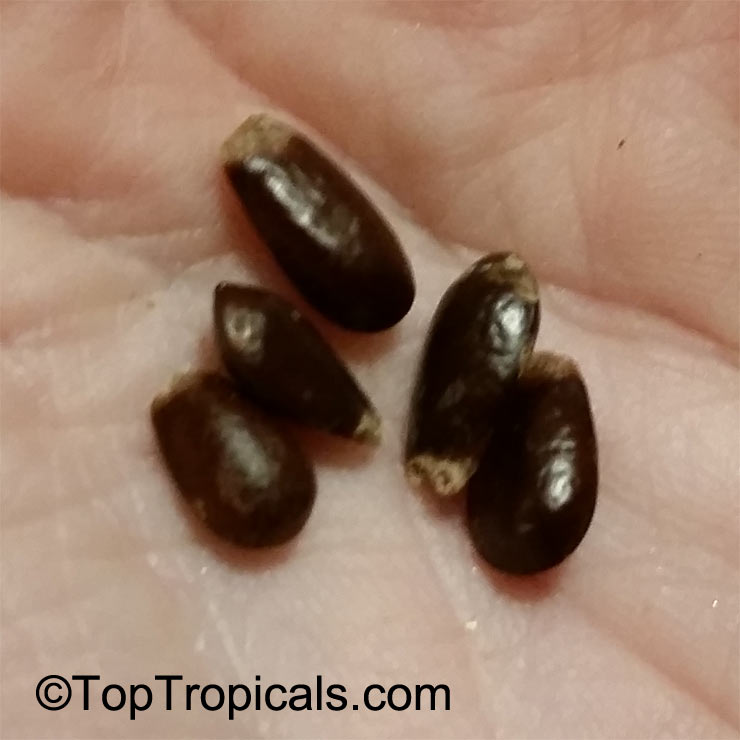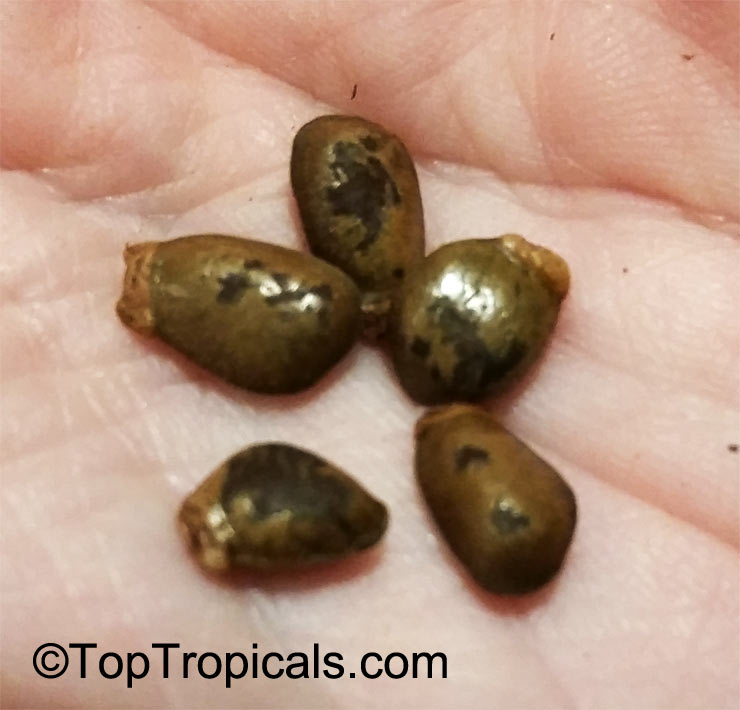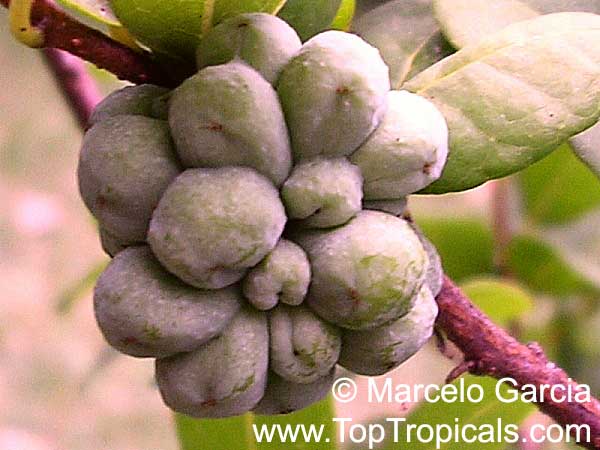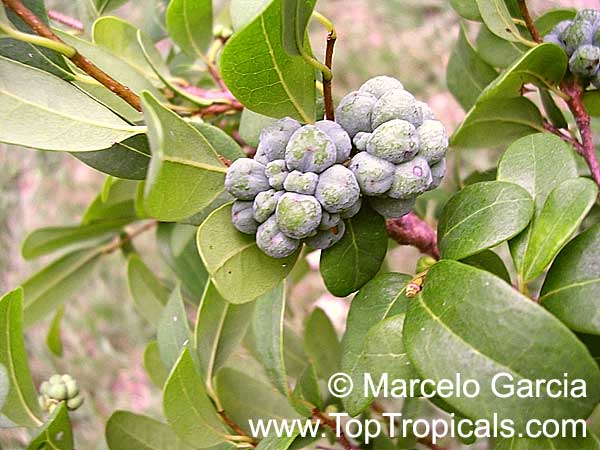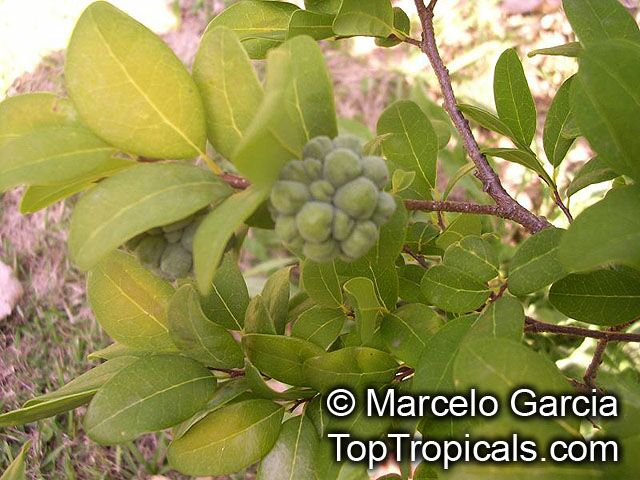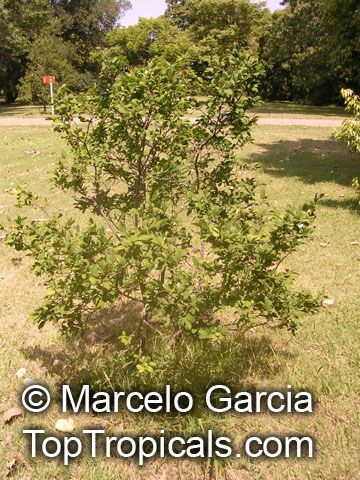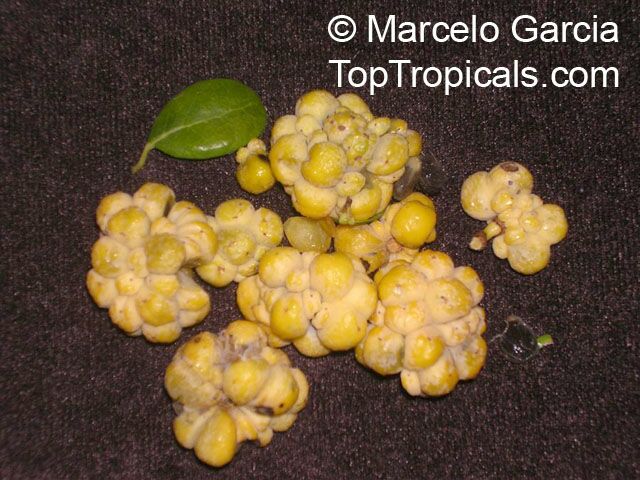Annonaceae - Botanical Family
Top Tropicals Plant Encyclopedia
| Number of plants found: 61 | Next | 
|
Go to page: | 1 | 2 | 3 | 4 | 5 | Last |
Botanical name: Anaxagorea javanica
Common names: Champun, Twin-seed, Bunga Pompun, Kekapur
Family: Annonaceae
Origin: Philippines, Taiwan





Anaxagorea javanica is a shrub or small tree related to Ylang Ylang, with fragrant flowers. The plant is harvested from the wild for local medicinal use in Southeast Asia - Thailand, Malaysia, Indonesia (Sumatra).
Botanical name: Annickia sp.
Common name: African Whitewood
Family: Annonaceae
Origin: Tropical Africa, South Africa








Annickia sp. is a large shrub or small tree growing up 5-10 feet tall, native to Tropical Africa and South Africa. A gorgeous sight to behold with its long, branchy tree and white-gray stems, the Annickia sp. has beautiful rounded, yellow to orange flowers. It prefers full sun to semi-shade and needs regular to moderate water depending on the amount of light it gets - more light needs more water. It is hardy from USDA zone 9-11.
Annickia sp. is easy to grow and needs pruning only to shape the plant. You can plant in the ground or in a pot, but in cold regions, a pot is a better option for which the soil should with a good drainable medium such as soil-less compost or peat moss. The soil mixture should contain perlite or construction sand. Place it in a warm place if possible, preferably with sunlight and protect it from very cold temperatures and frost. In late winter or in its second year, fertilize the plant as needed with balanced fertilizer such as 10-10-10 mix or an organic fertilizer.
In addition to its ornamental merits, the plant is used for several ethnomedical applications in African traditional treatments. The stem bark is collected and used to treat various ailments such as rheumatism, boils, and skin problems. The wood of the species is also occasionally used for people in need of firewood.
Botanical name: Annona cherimola
Common names: Cherimoya, Chirimoya, Custard Apple
Family: Annonaceae
Origin: Peru, Ecuador, and Colombia






Fruit has green, scaly exterior with numerous "eyes". Inside is white, juicy flesh surrounding the inedible black seeds. It is a very nutritious fruit containing significant amount of carbohydrates, dietary fiber, vitamins, minerals and electrolytes. The antioxidants and phytonutrients present in cherimoya aid in the prevention of oxidative stress-induced diseases such as cancer, heart diseases, and aging.
Grown in USDA Zone 9-11, Annona cherimola (Cherimoya) is a small tree, reaching 10-20 ft in height and width. It is native to Peru, Ecuador, and Colombia, but is commercially grown in Australia, South America, Asia, Spain, Italy, and California. This fruit tree prefers much sun, though it can tolerate some semi-shade. It requires regular water and moderate fertilizer to thrive.
The cherimoya fruit is said to be one of the best-tasting fruits in the world, with a creamy pulp and sweet fruity flavor. The pulp is eaten fresh, out of hand, and the seeds are toxic, with the potential to work as an insecticide when crushed. On the tree, the cherimoya fruit is large, ranging from 4-8 inches in length, sometimes weighing more than 5 pounds. Additionally, the antioxidants and phytonutrients present in the cherimoya fruit are known to aid the prevention of oxidative stress-induced diseases.
Cherimoyas prefer a warm environment, with summer temperatures of 65-80F and winter temperatures of 40-65F. They also require hand pollination due to their inability to be fertilized by their own pollen. When grown outside of its native region, trees must be babied in cold months and kept away from frost. Within 3-4 years they will begin to bear fruit, blooming with clusters of small flowers in late winter to early summer, and ripening their fruit from October to May. Fruits are ready for harvest when their skin slightly yellow or pale green, or when it gives a bit when touched.
Botanical name: Annona cherimola x Annona squamosa
Common name: Atemoya
Family: Annonaceae
Origin: West Tropical Africa






Atemoyas are small-to-medium-size trees growing to about twenty-five to thirty feet at maturity with about the same spread. Flowers are produced along with new growth in the spring following a winter dormancy period, and the fruit usually begin maturing in late August through the end of October. Atemoyas look very similar in some cases to sugar apples, except they have a smoother skin and the individual segments aren't quite as obvious. Most atemoyas have fewer seeds, too, than sugar apples, which makes them a lot easier to eat as a fresh fruit.
Recommended Fertilizer: SUNSHINE C-Cibus - Crop Nutrition Booster
SUNSHINE-Honey - sugar booster
Recommended Fertilizer: SUNSHINE C-Cibus - Crop Nutrition Booster
SUNSHINE-Honey - sugar booster
Recommended Fertilizer: SUNSHINE C-Cibus - Crop Nutrition Booster
SUNSHINE-Honey - sugar booster
Botanical name: Annona diversifolia
Common names: Annona ilama, Illama, Annona blanca
Family: Annonaceae
Origin: in Mexico, El Salvador, and Guatemala







It is a rare Anonna. Large fruit, sometimes over 6" long, having similarities in both shape and size to the Annona cherimola. The rind tends to be either green or pink-purple, with white or pinkish flesh respectively. Some varieties have deep red flesh. Flavor is said to be excellent in many varieties, rivaling that of the cherimoya and sugar apple. Ilama is the most cold sensitive of all the Annona. Typically fruits mature from July to December. The fruit is almost always eaten raw, out of hand. It grows best in climates having a dry season, followed by heavy rainfall. Ilama fruits perish within days of harvest and the fruit transports very poorly, hence its relative obscurity to much of the world.
Botanical name: Annona glabra
Common names: Pond Apple, Alligator Apple, Monkey Apple
Family: Annonaceae
Origin: West Indies







The Annona glabra (Pond apple tree) is a small tree with an open, spreading habit that can reach a height of 10-20 ft. It grows well in full sun and semi-shade and requires regular water during the growing season. The tree loves heat and is drought and flood tolerant, making it resilient and adaptable to various growing conditions.
The tree produces fragrant, yellow-orange flowers and edible fruits. The fruit is round, 1-2 inches wide, with a green, waxy skin and a creamy, yellow pulp. Rich in vitamins A and C, fiber, and antioxidants, the fruit has a sweet and tart flavor with a musky, pineapple-like taste. The fruit can be eaten out-of-hand, cooked, or made into drinks or jellies.
The pond apple tree is a great choice for home gardens and landscaping in USDA zones 9-11. In colder regions, it's best to grow the tree in a pot and bring it indoors when the temperature falls below freezing. The tree does not require pruning to produce abundant fruits, and depending on the season and the number of trees around, it can produce up to 20 fruits at a time.
Pond apple also has a wide range of medicinal benefits. The juice of the fruit is believed to be effective in treating rheumatism and various skin diseases. The bark is composed of triterpenes, which have anti-inflammatory properties, and the leaves are used to treat diarrhea and colic. With its numerous uses and health benefits, Pond apple is an excellent addition to a home garden and a great way to bring a piece of the southeastern swamp to your yard.
Pond apple is native to swamplands and provides an important food source for wildlife in this region. Although not as tasty as its tropical relatives, pond apple can stand flooding and spend weeks at a time with its roots under water.
Botanical name: Annona hayesii
Common names: Wild Cherimoya, Canelo
Family: Annonaceae
Origin: Panama







Botanical name: Annona hypoglauca
Common names: Wild Cherimoya, Anon cimarron
Family: Annonaceae
Origin: South America






Even though it is widely distributed in the Amazonia lowland rainforests between Colombia and Bolivia, Annona hypoglauca is a very rare species, especially in cultivation.
Botanical names: Annona maritima, Rollinia maritima
Common names: Aratikum, Quaresma
Family: Annonaceae
Origin: South America







This subtropical shrub or small tree, bears a close resemblance to other annonas. The fruit is the size of an apple with sweet pulp, melting like ice cream. Propagated by seed.
| Next |  |
Use link to repeat this search:
https://toptropicals.com/cgi-bin/garden_catalog/cat.cgi?search_op=and&keyword_op=and&language=e&family=Annonaceae&number=10
&no_change_lang=1&user=tt&sale=1&first=0
